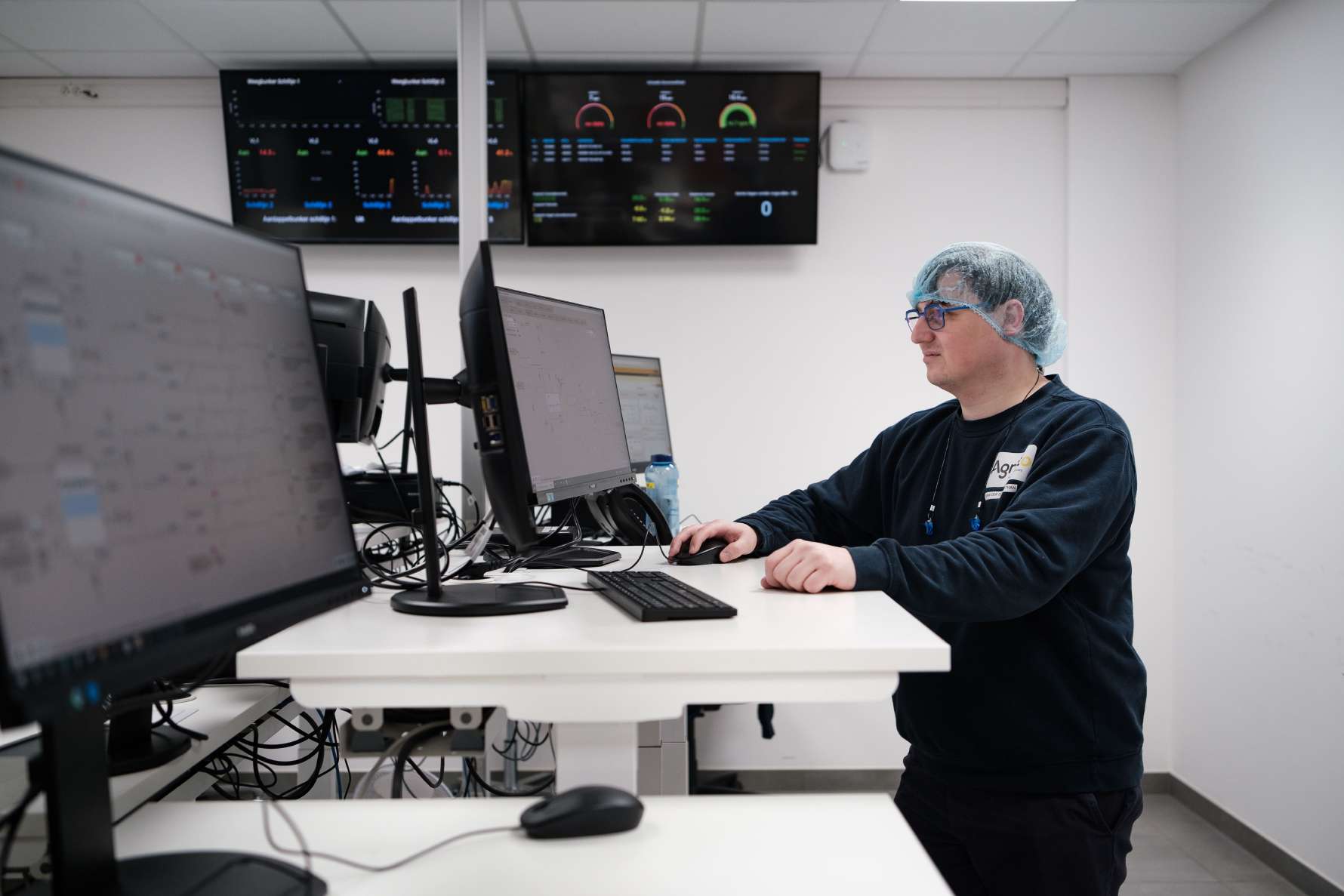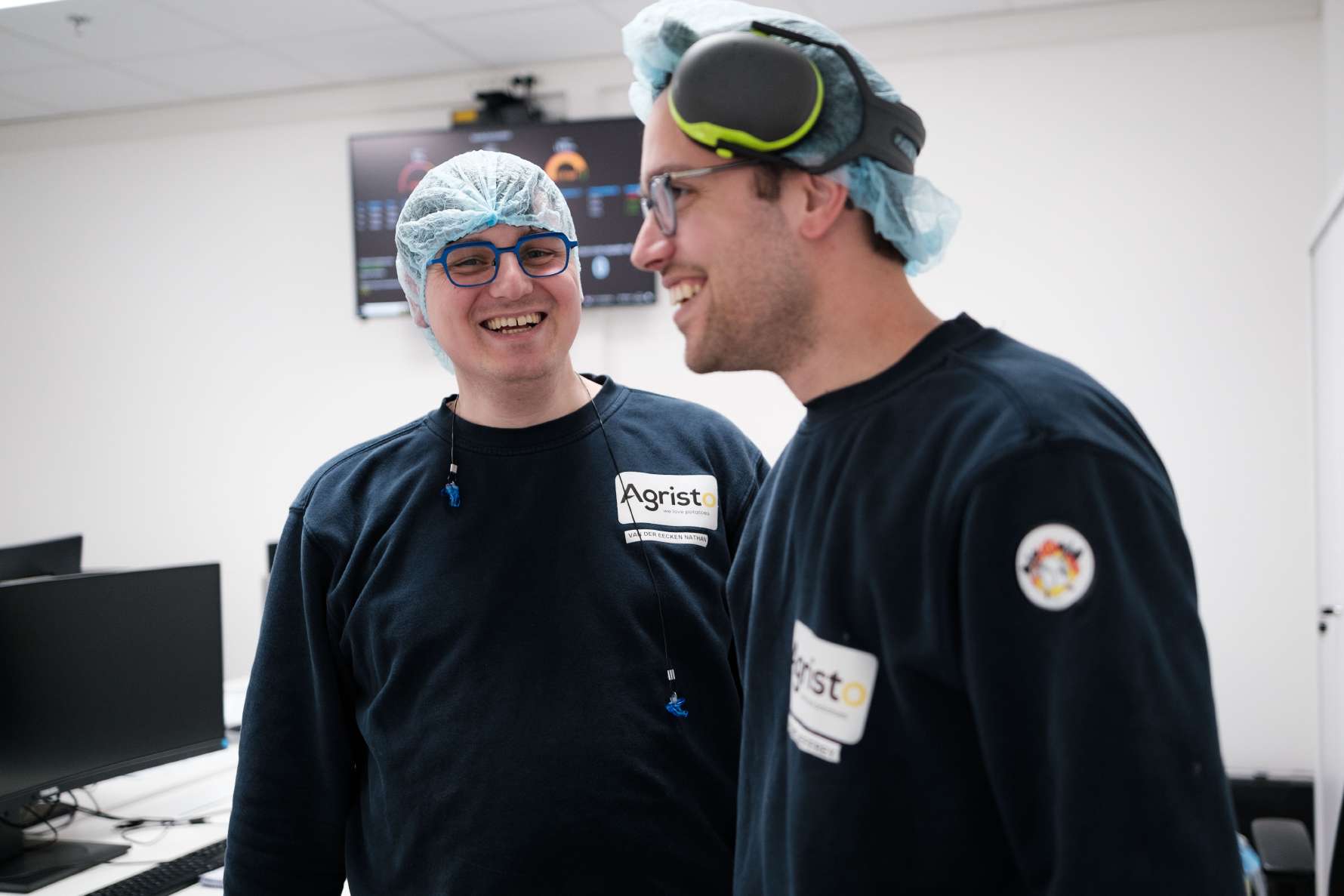Related use case
Revolutionising production analysis at potato powerhouse Agristo
Frederik Van Leeckwyck on
Agristo specialises in frozen potato products, straight from the field to the freezer. In 2021, we planted Factry Historian at four of their sites. How has it enabled them to streamline day-to-day production operations? And how was the software received by the people on the floor? We spoke with the company’s process engineer to find out.

If you’re a fan of potatoes, the Agristo plant in Nazareth, Belgium, might just be heaven on earth. Imagine a continuous conveyor stream of creamy puree and fresh croquettes, röstis oil-baked to perfection, and other potato snacks in all forms and shapes — that includes Spongebob too. One could easily forget he’s here to talk about Factry Historian, and what it means to their operations.
A lot, turns out. Here’s the story about how Factry Historian turned process monitoring around at Agristo, and how the Nazareth plant became their front-runner in operational analysis. Talking is process engineer Nathan Van der Eecken, a daily user of the software. “It’s not about monitoring processes, it’s about installing a culture of learning and improvement.”

Nathan has a background as an industrial engineer in the food industry. Before that, he spent 12 years in education, teaching at college. “This experience has turned out to be useful to my current job, especially when it comes to training others to use the historian’s Grafana dashboards, ensuring everyone can use them effectively and understand how to interpret the data”, he explains.
Before, data visualisation was limited to SCADA. Now, we have a simpler, clearer view, free from clutter and visual distortions, enabling us to understand our production line seamlessly.
Nathan Van der Eecken
Process Engineer at Agristo
“As a process engineer, there’s never a dull day. My role is to optimise ongoing processes to enhance production metrics and increase efficiency. This involves addressing and monitoring current issues, and trying to prevent them from happening again. This also includes recalibrating and enhancing equipment, identifying and resolving bottlenecks, and formulating improvement proposals.”
“Before Factry Historian, shift leaders relied solely on their experience to keep processes running smoothly. Limited visual insights were only accessible through SCADA systems, making it difficult to compare data, or notice trends. Therefore, we needed a simpler, clearer view, free from clutter and visual distortions, allowing us to understand our lines better and increase their efficiency.”

“Grafana dashboards are prominently displayed in the production zone, and provide instant insights into equipment operations — highlighting whether machines are active, idle, or stopped — and track real-time production data, such as output rates and oil usage. This setup not only enhances transparency but also allows the team to quickly address any irregularities on the spot.”
With Factry Historian, people can now engage with data, understand its meaning, and take actions to enhance operations. It's not just about monitoring processes, it's about installing a culture of learning and improvement.
Nathan Van der Eecken
Process Engineer at Agristo
“Our two core production dashboards have been game-changers for our teams. They highlight essential planning details, such as production targets, and use colours to signal when to switch tasks. Automatic calculations and visualisations enable operators to see in a glimpse how much has been produced, or how much premixed product is needed to run a batch, avoiding downtime or excess work. Additionally, the tool is extremely useful to perform root cause analysis.”

“Plenty of examples. For instance, we recently identified an elusive problem with waffle quality: half-filled waffles appearing sporadically. By monitoring KPIs like puree volume and pressure, we pinpointed a recurring issue during machine stops, leading to pressure drops and a small series of poor quality waffles. This insight allowed us to resolve a long-standing problem, preventing complaints, packaging issues and machine errors.”
To investigate an oil leakage, I quickly created a dashboard monitoring oil levels in tanks and ovens. Early data shows that one oven is consuming 40% more than expected. Tracking this will help pinpoint the cause of the issue.
Nathan Van der Eecken
Process Engineer at Agristo
“Another example is an issue with overflowing balance tanks. Previously, we would adjust the pulse time, assuming it was too fast. However, logging revealed that the actual issue was an excessively high level, which triggered automatic release to prevent overflow. Further investigation showed that excess starch was causing the problem. With clear data insights, we can now address the root cause, avoiding repeated fixes.”
“Finally, over the past weeks, we’ve noticed a consistent need to refill oil, totaling 29,000 kilos. To investigate, I quickly created a dashboard monitoring oil levels in tanks and ovens. Early data shows that a certain oven is currently consuming 40% more than expected. Tracking this will help pinpoint the cause of the issue – and it took me less than 1.5 hours to build this dashboard.”

“Initially, it was met with resistance. However, once fully implemented, every team began using it on a daily basis and recognised its value. This illustrates the importance of ensuring that new tools are fully operational and user-friendly before rollout. The teams even requested subsequent small enhancements, demonstrating they are on board, and proving that the tool is helpful to them.”
Gone are the days of relying solely on gut feeling and experience. Now, shift leaders can make decisions based on solid data, allowing them to anticipate and tackle issues before they become serious.
Nathan Van der Eecken
Process Engineer at Agristo
“Each team received targeted training on the dashboards, and I continue to work with them individually to improve their ability to interpret and act on the data presented. Younger workers catch on a bit faster, and we help others get the hang of it by showing them how well it works for their colleagues, building a learning culture naturally. Team leaders are instrumental in this process.”

“We are shifting towards using data more proactively to prevent issues, starting with our ovens – where clogging is a common issue, leading to flow drops. By monitoring flow rates, we’ve identified a critical drop point. We’re now focused on establishing the critical threshold and exploring if regular maintenance, such as increased cleaning at this point, can preemptively solve the problem.”
“Looking even further, our data-driven approach will increasingly focus on automation and integration. Reflecting on our journey from past practices to our current level of automation, we see significant potential for further advancements. The idea of letting data fully guide certain production lines might be ambitious, but we are already identifying possible lines to make it happen.”
Collect, analyse and report process data with ease